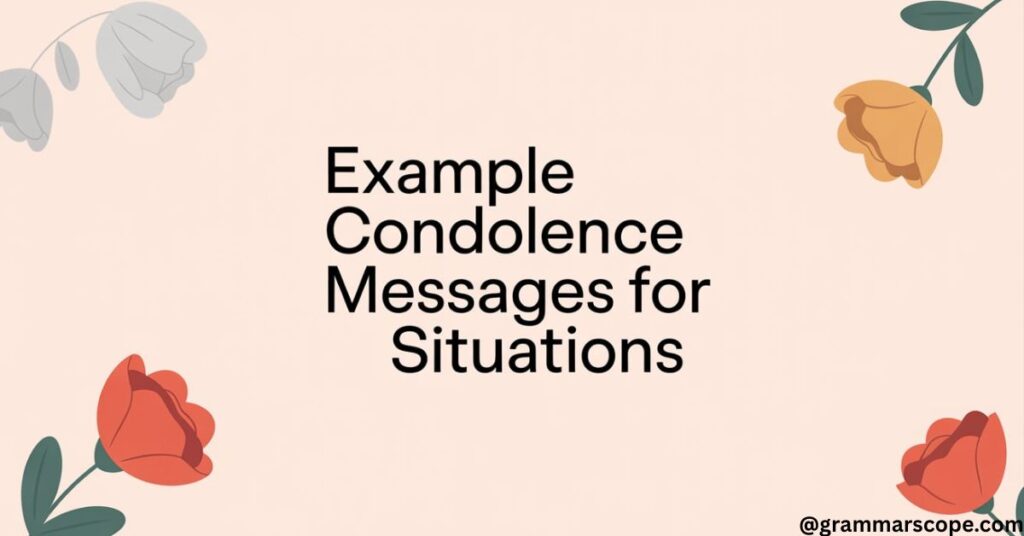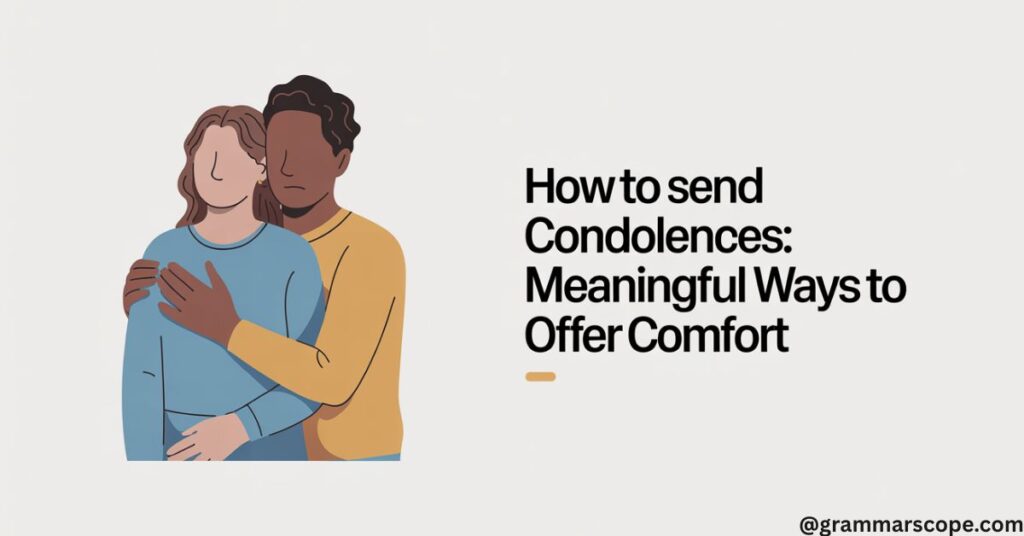How to send condolences is more than just knowing the right words; it’s about creating a heartfelt bridge between your compassion and the grief of another person. In moments of loss, the smallest gesture can bring light to a heavy day. Whether you choose a handwritten card, a quiet visit, or even planting a living tribute, what matters most is sincerity. This is not about grand displays but about touching someone’s heart in a way they will remember for years.
Grief has no timetable, and the pain of losing a loved one lingers far beyond the funeral service. That’s why sending condolences should never feel like an obligation; it should feel like a natural extension of your empathy. When thoughtfully crafted, a condolence message acknowledges the loss, offers genuine support, and reassures the grieving that they are not alone. These words, when sincere, can become a quiet source of comfort they return to again and again.
In this guide, you’ll discover how to communicate your sympathy with authenticity. You’ll learn what to say and what not to say, explore meaningful ways to express condolences beyond words, and find real-life examples for different scenarios. Whether you’re speaking face-to-face, writing an email, or sending a card, the aim is the same: to show up in their moment of need with kindness, understanding, and presence.
Choosing a Living Tribute Over Traditional Gestures
Sometimes words aren’t enough, and actions speak louder. Instead of sending flowers, you might choose to plant a tree in memory of the loved one. This living tribute grows and changes over time, symbolizing ongoing love and remembrance.
Scenario Example – Email:
Subject: In Memory of Your Father
Dear Laura,
I was deeply saddened to hear of your father’s passing. To honor his memory, I’ve arranged for a tree to be planted in Willow Grove Park—a place he often visited. I hope this living tribute serves as a reminder of the love and joy he brought to so many.
With heartfelt sympathy,
James
Pro Tip: A living tribute works especially well for families who value sustainability or nature. It also avoids the temporary nature of flowers, offering comfort that lasts.
Understanding the True Meaning of Sharing Condolences

To share condolences is to step into someone’s pain and acknowledge it without judgment or distraction. It’s not about finding the “right” words it’s about presence. This is where empathy and patience are your greatest tools.
For example, if a coworker loses a family member, your role isn’t to fix their grief but to offer a thoughtful message of sympathy that reminds them they are supported in the workplace.
Scenario Example – Office Card Message:
“Dear Michael, I was so sorry to hear about your sister’s passing. Please know the team is thinking of you during this time. If you need space or support, we’re here.”
Writing a Sincere Condolence Message
This is arguably the most important part of the article—because a condolence message is the heart of expressing sympathy. Get it right, and you give the grieving person something deeply meaningful to hold onto.
Pro Tips for Writing a Perfect Condolence Message:
- Keep it personal: Use their loved one’s name instead of generic terms.
- Share a memory: Even a small anecdote can bring comfort.
- Avoid clichés: Phrases like “They’re in a better place” can feel hollow.
- Be specific in your offer of help: Instead of “Let me know if you need anything,” say “I can drop off dinner on Thursday.”
- Sign your name clearly: A signature adds warmth and authenticity.
Scenario Example – Personal Letter:
“Dear Anna,
I can’t imagine the depth of your loss. I still remember the laughter your mom brought to our book club meetings—especially the time she made us all cry with laughter during that mystery novel debate. Please know I’m thinking of you, and I’ll be stopping by next week with some homemade soup.
With love,
Emily”
Example Condolence Messages for Different Situations

Having example condolence messages ready can help when you’re unsure where to start. Here are a few adaptable examples:
For a Friend (Text Message):
“Sending my condolences, Sarah. I’m here for you any time, day or night.”
For a Professional Contact (Email):
“Dear Mr. Thompson, I was saddened to learn of your father’s passing. Please accept my condolences, and know that you and your family are in my thoughts.”
For a Neighbor (Card):
“Dear Linda, I’m so sorry for your loss. Your husband’s kindness and humor touched many lives, including mine.”
Timing Matters: When to Send Condolences
When to send condolences depends on the relationship and context. Ideally, reach out as soon as you hear of the loss, even if it’s just a short note to say you’re thinking of them. Follow up later with more personal support.
Scenario Example – Immediate Email:
“Dear Chloe, I just heard the news about your grandfather. I wanted to reach out right away to let you know I’m here for you. I’ll check in again next week.”
Words to Avoid in Condolence Messages

It’s just as important to know what to say or what not to say. Avoid phrases like “I know how you feel” or trying to find a silver lining such as “At least they lived a long life.” These can unintentionally diminish the person’s grief.
Scenario Example – Alternative Wording:
Instead of “They’re in a better place,” try:
“I can’t imagine the pain you’re feeling right now. Please know you’re not alone.”
Offering Support Beyond Words
Actions often reinforce the sincerity of your condolences. You might bring meals, help with childcare, or simply sit quietly with the grieving person.
Scenario Example – Offer of Support in a Message:
“Dear Paul, I know this is a difficult time. I’ll be stopping by Thursday to mow the lawn so you don’t have to worry about it.”
This not only offers support but communicates that you’re willing to lighten their load in a tangible way.
Final Thoughts
Learning how to send condolences is about blending empathy, timing, and authenticity. Whether you’re expressing condolences through a card, a heartfelt conversation, or a meaningful action, the goal is to meet the grieving where they are—not where you think they should be.
Loss changes people, but compassion has the power to soften its edges. And sometimes, the simplest condolence message can mean the most: “I’m here. I care.”

Emma Olivia is an experienced blogger and the creative mind behind Grammar Scope. With a passion for language and years of writing expertise, she crafts engaging, informative content that simplifies grammar and writing tips for readers worldwide. Emma’s dedication to clear communication and love for the written word shine through every article she publishes, making Grammar Scope a trusted resource for language enthusiasts and learners alike.







